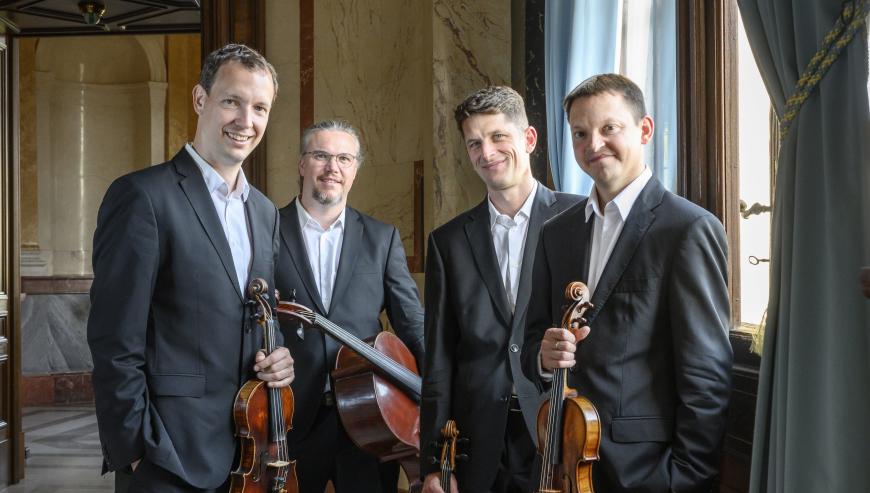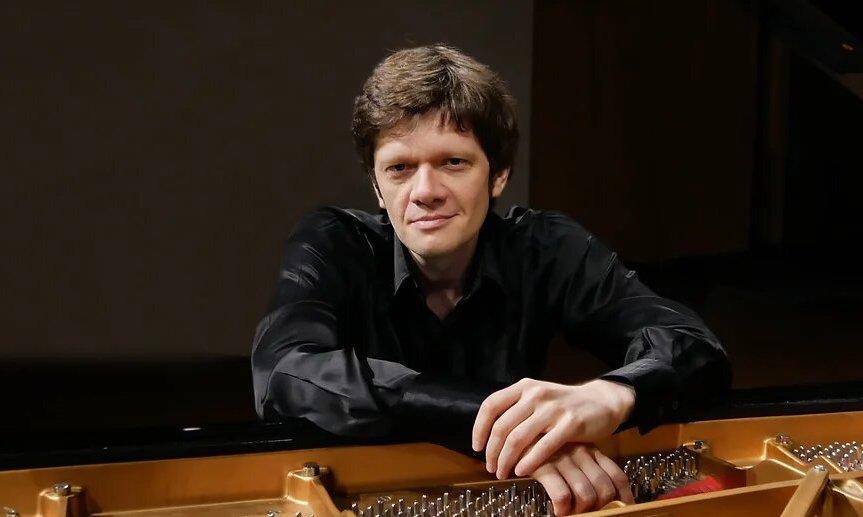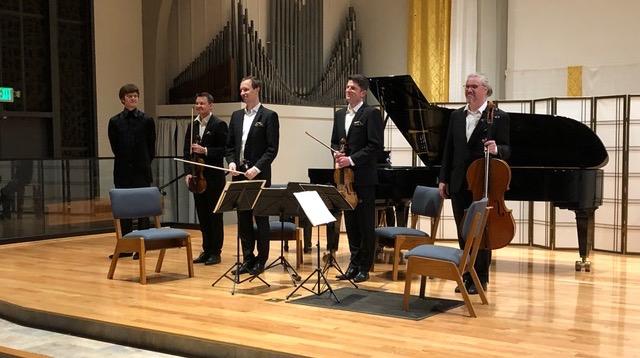
The Bennewitz Quartet, from Prague, brought music by four Czech composers to St. Francis Episcopal Church on Sunday, April 7, in a concert presented by the San Jose Chamber Music Society. 2024 has been designated the “Year of Czech Music,” but an excuse is hardly needed for a selection of works this good and this classic.
The centerpiece of the program was Leoš Janáček’s String Quartet No. 2 (“Intimate Letters”). This highly mutable composition can sound quite different from interpretation to interpretation. The Bennewitz players presented the piece as if it depicted a summit meeting between two entirely different musical styles.
Parts of the performance were harsh and modernist in the extreme: metallic sounds from the strings, strained and frantic melodies over harsh accompaniment, grinding and squealing, and what could best be described as screaming or the sound of a white noise machine. In startling contrast, gentle, almost caressing lyric sections brought out the melodic beauty in Janáček’s writing. Soft, deep chords and some gently spicy harmonies also featured in these moments. And the last movement was in a jaunty, galumphing style of equal gentility.
These two musical languages constantly alternated throughout the work, occasionally combining with screams or mad trills in one instrument over melodic accompaniment in the others. The players performed with utter commitment to both idioms. They brought out the rhythmic snap characteristic of other works by Janáček. The rolling figures at the end of the third movement sounded startlingly identical to the conclusion of the penultimate Allegretto from the composer’s Sinfonietta.
As a surprise follow-up to the Janáček, the Bennewitz players presented the Largo sostenuto from Bedřich Smetana’s String Quartet No. 1 in E Minor (“From My Life”). Smetana packed a lot of anguish into this quartet, along with melodic beauty. This performance divided up the piece in the same way as the Janáček, gentle sections alternating with angry throbs and slashes.
Although Antonín Dvořák’s Piano Quintet No. 2 in A Major affords plenty of opportunity for a similar divided approach, the Bennewitz players and pianist Arsentiy Kharitonov declined to take it that way. Much of Dvořák’s music welcomes a cheerful, straightforward performance. These players produced a lively and dramatic rendition, turning to heartbreaking lyricism in the slow sections and melting them down in transitions back to fast music. Not even in the most frantic passages did anything approaching harshness appear.

For once in this piece, the trio section sounded like what it is: the same music as the Scherzo, just slowed down to a crawl. The players achieved this connection by keeping the intensive drive going, even in the slow sections. Only in the Finale, the most clotted movement, did the momentum spin its wheels a little.
The encore was the Scherzo from Robert Schumann’s Piano Quintet in E-flat Major, one of Dvořák’s inspirations. This fiery movement emerged with the same impact as the Czech composer’s brightest moments.
The concert opened with the brief Theme and Variations (1936) by Hans Krása, a Czech-German Jewish composer who died at Auschwitz. The theme is a popular song that Krása wrote for a stage play. The variations include a little slinky ooze here, a little metallic buzz there, a touch of jazz. It’s an imaginative piece, presented by the Bennewitz players with plenty of contrast.
The sound quality of the Bennewitz Quartet was light and shiny, especially in the violins, giving smoothness to the lyrical passages. (This tone quality was probably due in large part to the hall’s acoustics.) First violinist Jakub Fišer was freer with ritards and other tempo variations than his fellow players. His sound merged well with second violinist Štěpán Ježek — who gave all the introductory talks.

The unity of the lower players, violist Jiří Pinkas and cellist Štěpán Doležal, was even more remarkable. Their two instruments sounded almost identical when playing together, which they did frequently in the Janáček. They each got the chance to express individual character in some lengthy solos as well, especially in the Smetana.
When Kharitonov joined the ensemble, he proved to be a pianist of restrained, even reticent character. Always supporting the string players, never moving aurally in front, even in unaccompanied passages, he made the sound subliminally richer.
The five musicians made quite an interesting combination. They proved, too, that four Czech composers have enough variety between them to make a fully satisfying concert.



